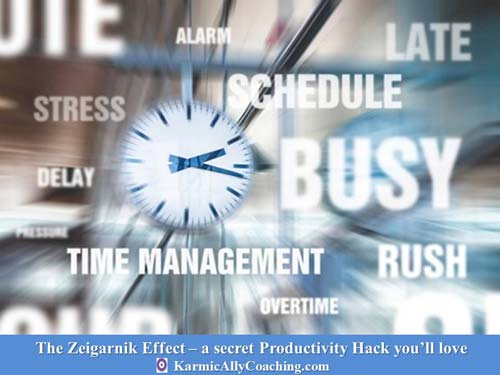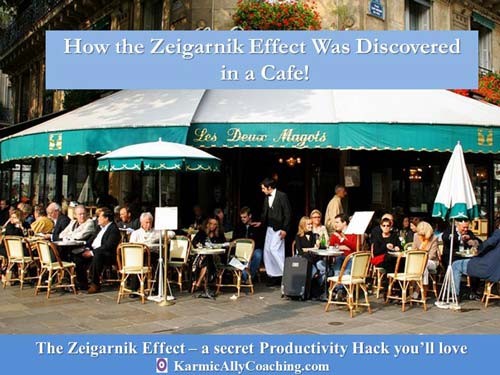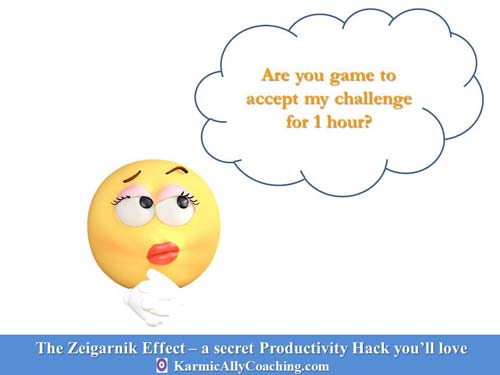
Actually, it’s not so secret. You’re most probably using it without realizing that you’re using it or that it has a name.
Did you watch Dallas in the 1980s?
Remember the Season Finale which ended with the question Who Shot JR?
That dear reader is an example of The Zeigarnik Effect.
A simple technique, it’s something that’s commonly adopted in TV serials where cliff-hangers guarantee that viewers will return to the program because they want to find out what happened and get closure.
Last year I saw a series of Nescafe ads that used this effect to perfection. In the story, the famous Indian actress Deepika Padukone has a new neighbor who is aware of her celebrity status and how they become friends over a mug of coffee.
There’s a minute worth of advert with the signage ‘to be continued’. Of course when the ad came on, our eyeballs were glued to the Idiot Box.
I love Nescafe and if I hadn’t, I’d certainly have gone and bought some.
Closer to home, let me ask you a question.
Do you remember the work you’ve done or keep fretting over the tasks that you have to complete and are either incomplete or not started?
If you answered affirmative to the latter, then you’re experiencing Zeigarnik Effect.
In psychology, the Zeigarnik Effect states that people remember uncompleted or interrupted tasks better than completed tasks.
Moreover, if we are doing a task, in an interested and motivated way, and have to stop doing it, we’ll find it hard to settle until we get back to the task and finish it.
The Power of Observation – How the Zeigarnik Effect Was Discovered

The Zeigarnik Effect is named after Bluma Zeigarnik, a Russian psychologist, who worked with Gestalt psychologist Kurt Lewin in Vienna.
One day in 1927, while sipping coffee in a restaurant in Vienna, she noticed that all the waiters seemed to remember all the orders which were unpaid and in the process of being served. When completed, however, the orders evaporated from their memory.
Back in the laboratory, Zeigarnik decided to test the theory on her students. She set them a range of tasks such as solving puzzles and stringing beads.
In some tasks, she allowed them to finish; in others, she interrupted them half-way through. Afterwards, she discovered that the students were more likely to remember the interrupted tasks than the completed ones!
Are you brave enough to try this experiment? It’s easy, you do nothing!
The best way to prove a point is to try it. Here’s my challenge to you.

I suggest you purposefully leave an activity or task that you know you need to complete unfinished for just 1 hour (if you’re braver, then for the whole day) and observe how you feel.
Do you feel relaxed or uncomfortable? At ease or uneasy? Do you think I’ve suggested something crazy to you?
You WILL feel uneasy and disconcerted and I promise you, the activity that you’ve left incomplete will be top of mind for you.
You’ll experience task-specific tension.
Lewin’s field theory states that a task that has already been started establishes a task-specific tension, which improves cognitive accessibility of the relevant contents. The tension is relieved upon completion of the task. If the task is interrupted, the reduction of tension is impeded. Through continuous tension, the content is made more easily accessible, and can be easily remembered.
This explains why some professionals are great at multi-tasking and maintain their productivity too, even though at times they feel they’ve become jugglers. (I’ve shared precious tips to fulfil Multi-tasking Job Skill requirements while exuding Executive Presence in this blog post.)
Coming back to the subject of my post, the Zeigarnik Effect suggests that not finishing a task creates mental tension, which keeps it at the forefront of our memory.
You can only alleviate this tension by completing the task.
As such, the phenomenon proposes that making a start on something – no matter how big or small – keeps it ticking way at the back of your mind until you reach the end.
And the same goes for your seemingly impossible task. Just make that first step and the rest will follow.
I use the Zeigarnik Effect whenever I really want to get an important task done but feel my energy is wavering.
For example, when I’m working on a blog post on a topic that I’m passionate about, I start writing it, research the images and quotes that I want to use and then stop. I commence on another activity using the Pomodoro Technique or just take my dog out for a walk.
My mind is still on the task at hand and while I’m enjoying my furry friend’s company, I am eager to get back to the task at hand and relieve myself of the tension created by incompletion.
If I’m suitably motivated, I’ll return and complete the post, images and upload it to my blog within 30 minutes. Otherwise I leave it till the next day.
As a social scientist and student of behavioural psychology, I was keen to find out how I was actually getting more done and more importantly, how to guide others to do the same.
I discovered there were 3 critical factors involved – my motivation level, nature of experience and the amount of work I had done before I stopped.
Whenever I’m passionate about something or highly motivated, then I return quickly to the task to hasten completion and enjoy the sense of achievement.
If I’m not excited, then I have to commit to a time schedule or I’ll procrastinate. For example, paying bills is something that I’ve slotted a day of the month and scheduled in my diary to complete no matter what.
While I enjoy development and business tasks, I don’t want to let maintenance tasks fall to the side. I teach my entire Time Management Strategy and Tactic in my course.
I also discovered that how far I had gone in doing my task mattered. If I had completed at least 10%, then the probability that I would return to it sooner increased and so did task completion. There has to be some skin on the teeth and it’s easier to complete what one has started rather than feel a sense of disappointment or failure.
If you love reading research, then this article by Will Joel Friendman, PH.D is one that you will definitely want to check – The Zigarnik Effect and Completing Everything.
3 Step Plan to apply the Zeigarnik Effect to reduce anxiety and being productive
Step 1: Make a list of all your pending tasks for the day – the good, the bad and the ugly. It doesn’t matter at this point how you feel about the task, just the task.
After you’ve brainstormed your list, take a good look at it and decide which ones are priorities and cross out the superfluous tasks.
Assess the amount of time required for each task. If it’s a short one, do it immediately. If it will take time, then move to the next step.
Step 2: Start the task but stop at a point when you’d really like to go on and take a break doing something completely different. All through your break, your subconscious brain will be quietly sorting out how to complete the unfinished task (like the blog post example I shared earlier).
Things will then fall into place allowing you to complete the task more efficiently than if you’d carried on without stopping.
Step 3: This step may sound counter-intuitive but leave a task unfinished at the end of the day. This will motivate you to pick up that incomplete task the next day and finish it faster. It’ll also give you the momentum to start new tasks because you’ll already have that sense of achievement and good feelings are the best motivators I can think of.
Your turn – how do you maintain productivity and avoid anxiety?
PS. Did you notice how I used this technique in the blog post? 🙂




 I adhere to the Certified Coaches Alliance Code of Ethics and Standards. A copy is available on request.
I adhere to the Certified Coaches Alliance Code of Ethics and Standards. A copy is available on request.
 Let's Talk through the Connect Form:
Let's Talk through the Connect Form: